By Greg Baum
The late Richmond footballer Shane Tuck had the most severe case the Australian Sports Brain Bank has yet seen of the degenerative brain disease CTE, which was also found post-mortem in former players Polly Farmer and Danny Frawley.
“It’s the worst case I’ve seen so far,” said neuropathologist professor Michael Buckland, one of the brain bank’s founders. “It was actually quite shocking, the degree of disease he had.”
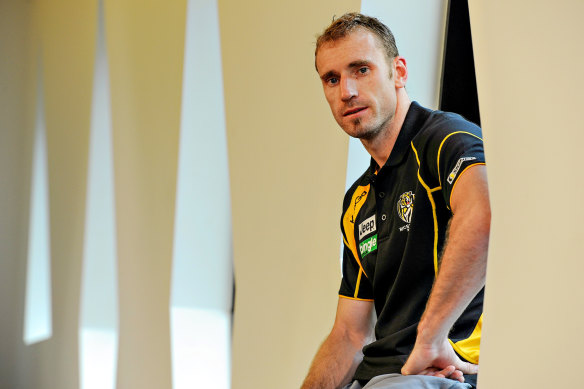
Former Tiger Shane Tuck was found after his death last year to have a severe case of CTE.Credit: Sebastian Costanzo
CTE (chronic traumatic encephalopathy) can only be diagnosed after death. The giveaway is a build-up in the brain of a protein called tau. “Once I got the tau stains back, it was the first time I didn’t need a microscope to make the diagnosis,” Buckland said. “There was so much tau I could see it with the naked eye.”
Tuck, who played 173 games for the Tigers and had a brief boxing career after he retired, was 38 when he died last July. Farmer died at 84, Frawley 56. “Those cases span three generations of players,” Buckland said. “What’s disturbing is that the worst case is the most recent, and also the youngest.”
Tuck was the son of Hawthorn legend Michael Tuck and his mother Fay is Gary Ablett senior’s sister. His diagnosis came as a kind of solace to his family, including sister Renee and brother Travis, and his wife Katherine and two children in Adelaide. Shane Tuck lived with his parents for the last 18 months of his life, and they watched his deterioration in anguish and bemusement.
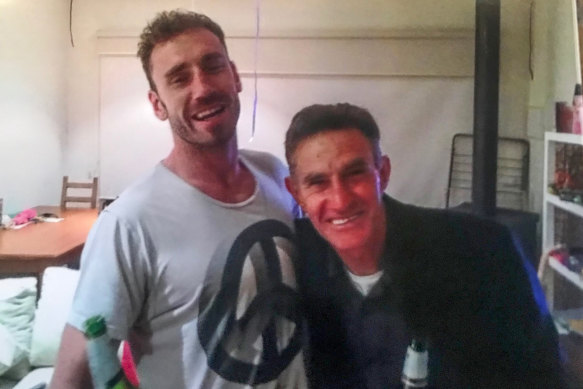
Shane Tuck (left) with his father champion Hawthorn footballer Michael.
“He was intelligent enough to know that there was something wrong with his brain,” said Fay, his mother. “He continually told us that he didn’t feel like himself. We tried every avenue we could in order to find out what it was that was distressing Shane so much.”
CTE sufferers typically develop problems with memory, cognitive function, mood and behaviour, many develop depression and a significant number dementia.
But more than anything else, the Tucks saw their son and brother at a loss. “Shane was never aggressive or violent,” said Fay. “In fact, he was placid. He wanted to try all avenues he could to help himself, even when he knew nothing would work. He knew he was getting worse. There was no medication that would help.”
Around the time her son died, Fay read a story about Farmer and said to her cousin: “Maybe this is what Shane’s got.” From there flowed the family’s heavy-hearted decision to donate his brain to the sports brain bank. “We needed some answers,” Fay said. “You don’t get answers unless you donate. It’s amazing what they can come up with.” She and Michael hope others follow suit.
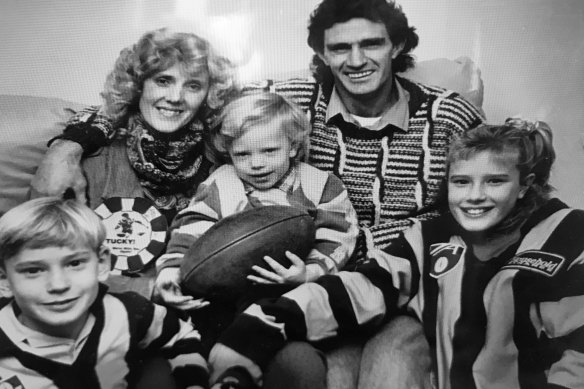
A young Shane Tuck, left, with his mother Fay, brother Travis, father Michael and sister Renee.
A family steeped in footy, the Tucks make clear that they do not blame the AFL. Buckland said the AFL had shown greater alacrity than other sports in recognising the link between repetitive head injury and CTE.
An AFL spokesman said on Friday: “We thank the Tuck family for their support of ongoing research in this area and for the ability to continue to learn about this condition and the AFL will, as previously, assist in that endeavour.
“We take very seriously the health and safety of all present, past and future players in our game and are currently interviewing for a position at the AFL that will specifically focus on the work we are doing as an industry to respond to the issue of concussion.”
The spokesman added that the league had in recent years strengthened match-day protocols for the identification and management of concussion.
“... We continue to change the Laws of the Game to discourage high contact and are using the ARC (the league’s review hub) to provide another opportunity to identify potential concussive incidents through the use of world leading video technology but we are committed to continually reviewing our response.”
Until around 15 years ago, CTE was thought to be a disease particular to boxing, and otherwise was little studied or understood. It is now clear that the problem is much wider. It remains challenging for researchers, who depend on the donated brains of dead athletes. Almost by definition, they will only be from families who, like the Tucks, already knew that something was amiss.
Most data comes from the US, where more than 600 cases have been logged, mostly among hockey and gridiron players. Recently, an English project uncovered CTE in four of six retired soccer players. The first Australian to be diagnosed with CTE in 2013 was former NSW Waratahs rugby coach Barry “Tizza” Taylor, whose brain was sent to Boston for analysis.
Tragically, his son Stephen died in July last year, aged 56, and was also found to have CTE. “The disturbing thing about Stephen Taylor’s case is that he gave up rugby at the age of 16,” said Buckland.
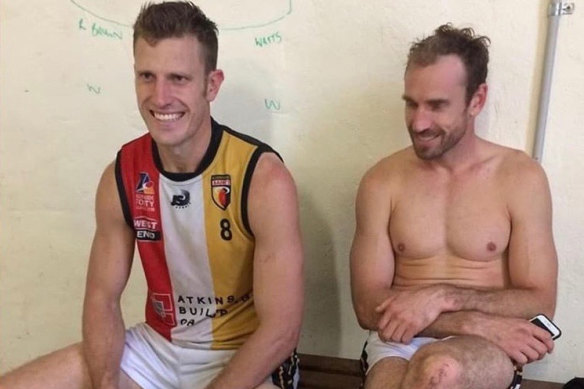
Shane Tuck (right) and his brother Travis.
Because CTE is diagnosable only after death, it is difficult to pinpoint one cause or starting point. Tuck did not have a playing history of major concussions. And CTE was not explicitly caused by one or several concussions anyway, Buckland said.
“What researchers found correlated well with CTE was the number of years playing,” he said. “The idea there is the concept of sub-concussive injuries, the blows to the head that don’t lead to an obvious concussion, but still probably are causing some trouble in the brain.
“It’s fine if you get one or two, but if you get 10,000, you’re a risk.”
Of four AFL brains donated to the bank, three – Farmer, Frawley and Tuck – have had CTE. “We’re dealing with very small numbers, so we don’t want to over-extrapolate,” said Buckland. “What we could take from that is that it’s been in the sport for a while. In the not too distant past, players were still being exposed to the sort of injuries that result in CTE.
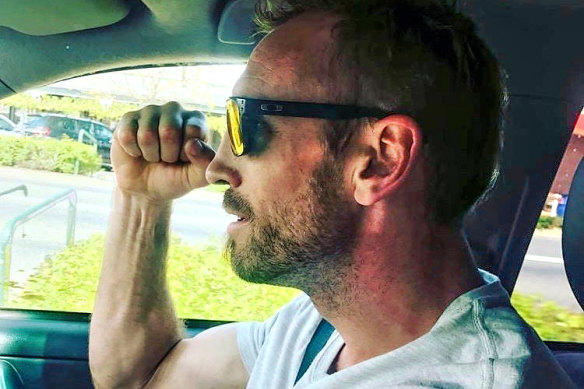
Shane Tuck’s family say he knew something was not right with his brain.
“We’re very conscious of trying not to sound too alarmist. We don’t want to give the impression to all those ex-footy players out there that they need to be really, really worried. The information we want to push is that it is an occupational risk and a public health concern.
“The first step in fixing a problem is acknowledging you have a problem. I’m not sure all the sporting codes have yet taken the first step.”
The Tuck family urge anyone who might find themselves in their shoes to donate a brain. They still grieve the loss of their son and brother, but now with some sense of closure. “You know there’s a reason why he did it,” said Michael. “It wasn’t because he was a lunatic or any sort of substance or anything like that. He was just in pain.”
A coronial inquiry is ongoing.